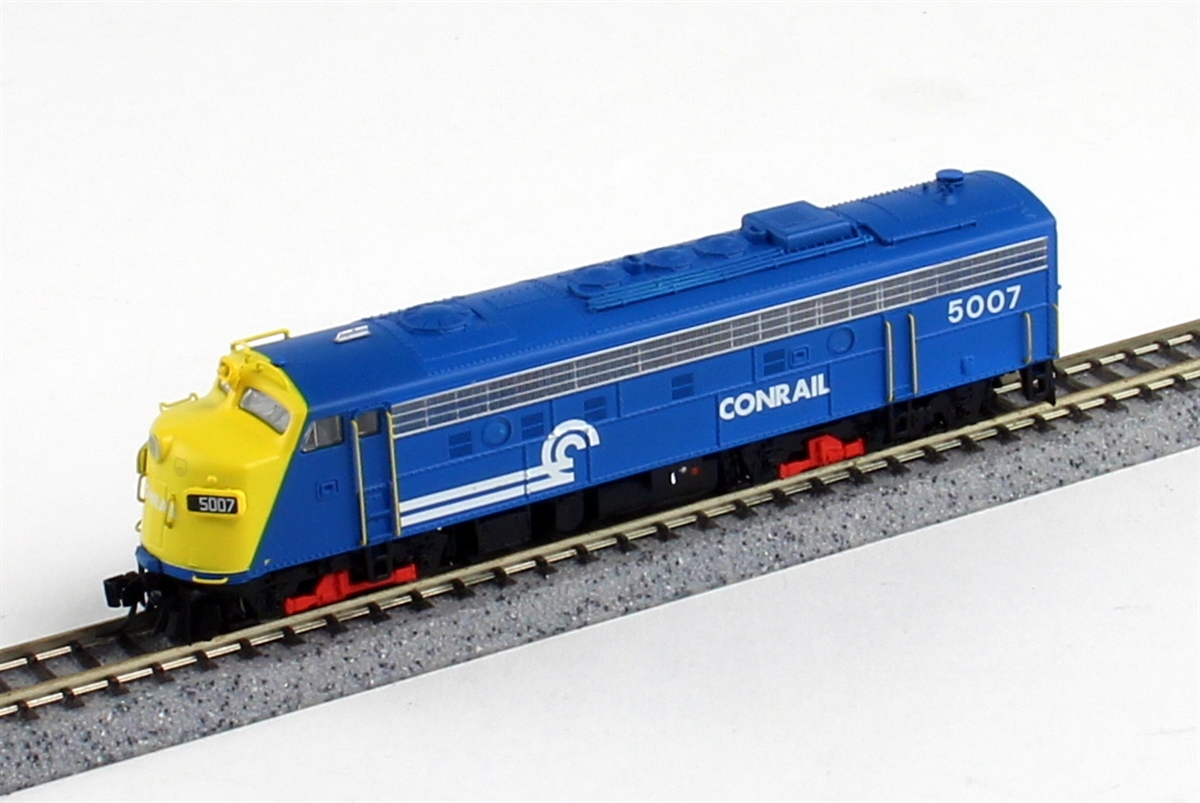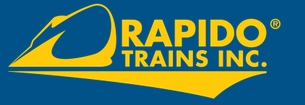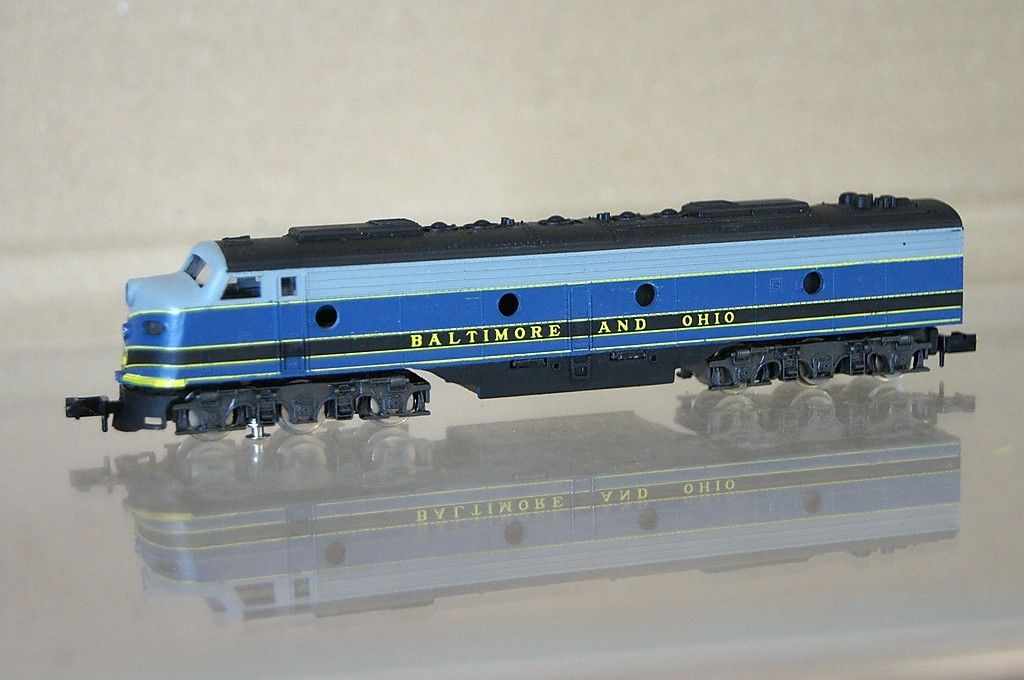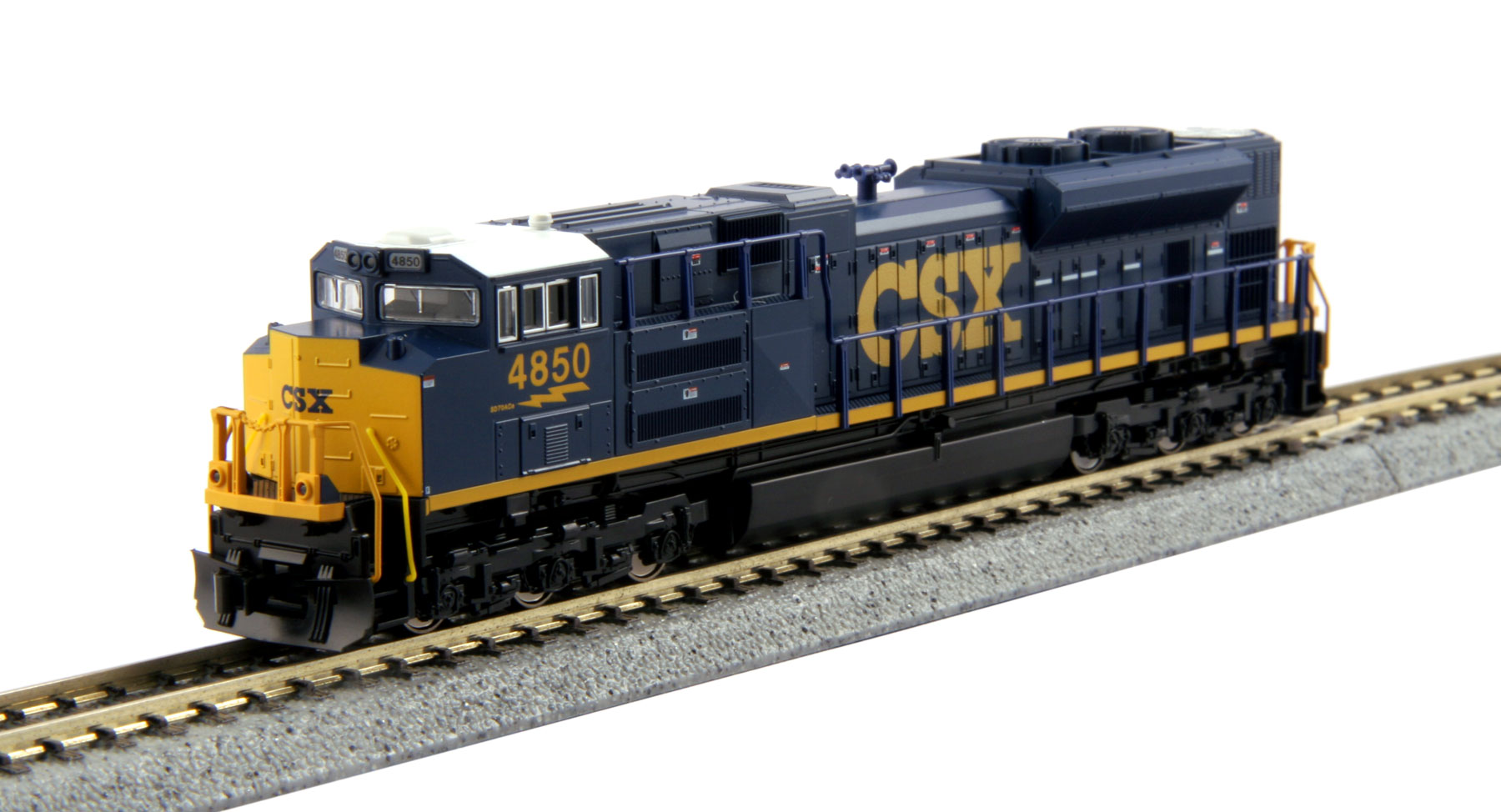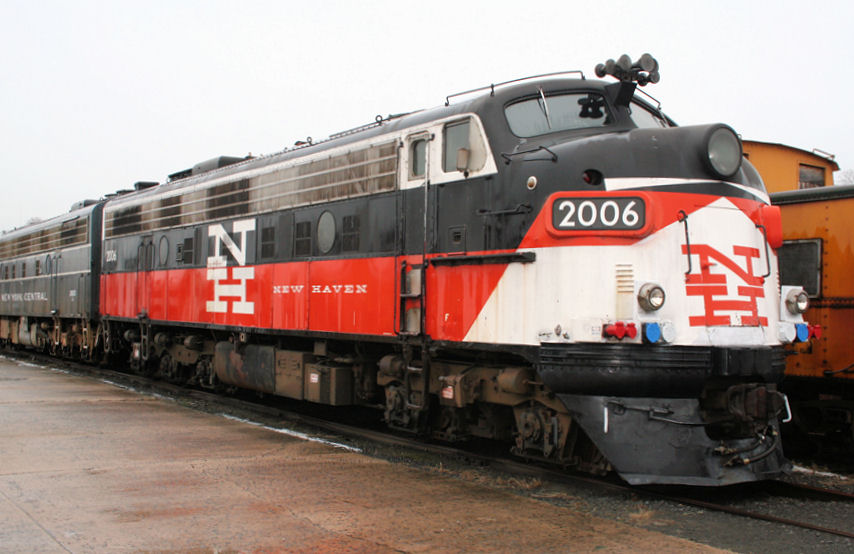Model Information: This model was released in 2016 by Rapido Trains. Several numbers available for each paint scheme. The full manual for this train may be found: by clicking here
The model features: Correct details for both delivery groups; Separate grab irons; Road-number and era-specific details applied at the factory; Correct fuel and water tanks and cooling coils; full underframe details; Operational headlight and back-up lights; full cab interior; will operate smoothly on DC and DCC layouts; Rapido's proven 5-pole, skew-wound motor and silky-smooth drive system; Micro-Trains couplers mounted at the correct height.
The model features: Correct details for both delivery groups; Separate grab irons; Road-number and era-specific details applied at the factory; Correct fuel and water tanks and cooling coils; full underframe details; Operational headlight and back-up lights; full cab interior; will operate smoothly on DC and DCC layouts; Rapido's proven 5-pole, skew-wound motor and silky-smooth drive system; Micro-Trains couplers mounted at the correct height.
DCC Information: This engine comes in two forms: DCC-Ready with Coupon and DCC-With-Sound. The sound-equipped DCC model comes with an ESU LokSound sound decoder or dual-mode DC/DCC silent model with authentic sounds including Hancock air whistle (where appropriate).
Important Note! The DCC-Ready versions of this train come with a mail-in coupon for a FREE dual-mode DCC drop-in decoder.
Important Note! The DCC-Ready versions of this train come with a mail-in coupon for a FREE dual-mode DCC drop-in decoder.
Prototype History: The EMD FL9 has secured a rightful place in North American railroad history. These dual-power locomotives were designed to operate on both diesel-electric and on pure electric power so that they could haul the New Haven Railroad?s passenger trains in and out of New York City's Grand Central Terminal without the need for an engine change. Built between 1955 and 1960, many of the fleet continued in regular revenue service for nearly fifty years on both long haul and commuter trains. While the last revenue commuter run occurred in 2009, two units remain in regular revenue service today on the Maine Eastern between Brunswick and Rockland Maine. Several others have been preserved and are in use on tourist railroads in both the US and Canada.
This engine can be viewed as a modified FP9. It was built to carry a larger steam generator than the FP9 and hence is longer and heavier. To support the extra weight, the rear truck sports 3 axles in place of the FP9's double-axle configuration. The result is a relatively uncommon 5-axle design (2 in front and 3 in the back) with 10 wheels.
This engine can be viewed as a modified FP9. It was built to carry a larger steam generator than the FP9 and hence is longer and heavier. To support the extra weight, the rear truck sports 3 axles in place of the FP9's double-axle configuration. The result is a relatively uncommon 5-axle design (2 in front and 3 in the back) with 10 wheels.
Road Name History: The Consolidated Rail Corporation, commonly known as Conrail (reporting mark CR), was the primary Class I railroad in the Northeast U.S. between 1976 and 1999. Conrail is a portmanteau of "consolidated" and "rail" from the name of the company.
The U.S. federal government created Conrail to take over the potentially profitable lines of multiple bankrupt carriers, including the Penn Central Transportation Company and Erie Lackawanna Railway. With the benefit of industry-wide regulatory requirements being reduced (via the 4R Act and the Staggers Act), Conrail began to turn a profit in the 1980s and was turned over to private investors in 1987. The two remaining Class I railroads in the East, CSX Transportation and the Norfolk Southern Railway (NS), agreed in 1997 to split the system approximately equally, returning rail freight competition to the Northeast by essentially undoing the 1968 merger of the Pennsylvania Railroad and New York Central Railroad that created Penn Central. Following Surface Transportation Board approval, CSX and NS took control in August 1998, and on June 1, 1999, began operating their portions of Conrail.
The U.S. federal government created Conrail to take over the potentially profitable lines of multiple bankrupt carriers, including the Penn Central Transportation Company and Erie Lackawanna Railway. With the benefit of industry-wide regulatory requirements being reduced (via the 4R Act and the Staggers Act), Conrail began to turn a profit in the 1980s and was turned over to private investors in 1987. The two remaining Class I railroads in the East, CSX Transportation and the Norfolk Southern Railway (NS), agreed in 1997 to split the system approximately equally, returning rail freight competition to the Northeast by essentially undoing the 1968 merger of the Pennsylvania Railroad and New York Central Railroad that created Penn Central. Following Surface Transportation Board approval, CSX and NS took control in August 1998, and on June 1, 1999, began operating their portions of Conrail.
Brand/Importer Information: Rapido Trains Inc. is a high-end manufacturer of model trains and accessories in HO, OO and N (North American 1:160 and British 1:148) scales. The firm's mission is to recreate the entire rail travel experience, from fully-detailed interiors and under-frames on models to fully-wired telephone poles for model railroads.
The name RAPIDO was introduced by Canadian National in 1965 to headline the railway's high-speed intercity passenger services. Until the mid-1980s, RAPIDO stood for fast schedules, frequent trains, and superb service.
Today, Rapido Trains continues the RAPIDO concept with state-of-the-art models and attention to fine detail. This company is not related to the venerable (and now defunct) German manufacturer Arnold Rapido, nor the present-day Arnold (which is owned by the United Kingdom's Hornby), Canadian based Rapido Trains was founded in 2003.
The name RAPIDO was introduced by Canadian National in 1965 to headline the railway's high-speed intercity passenger services. Until the mid-1980s, RAPIDO stood for fast schedules, frequent trains, and superb service.
Today, Rapido Trains continues the RAPIDO concept with state-of-the-art models and attention to fine detail. This company is not related to the venerable (and now defunct) German manufacturer Arnold Rapido, nor the present-day Arnold (which is owned by the United Kingdom's Hornby), Canadian based Rapido Trains was founded in 2003.
Item created by: gdm on 2016-06-28 06:08:32. Last edited by gdm on 2018-02-05 08:26:11
If you see errors or missing data in this entry, please feel free to log in and edit it. Anyone with a Gmail account can log in instantly.
If you see errors or missing data in this entry, please feel free to log in and edit it. Anyone with a Gmail account can log in instantly.


